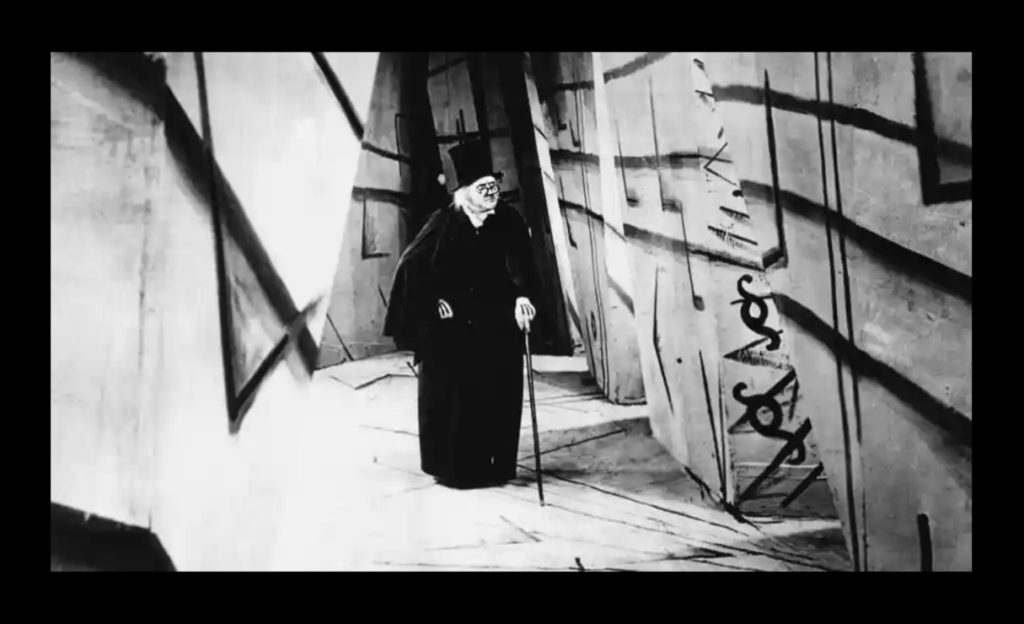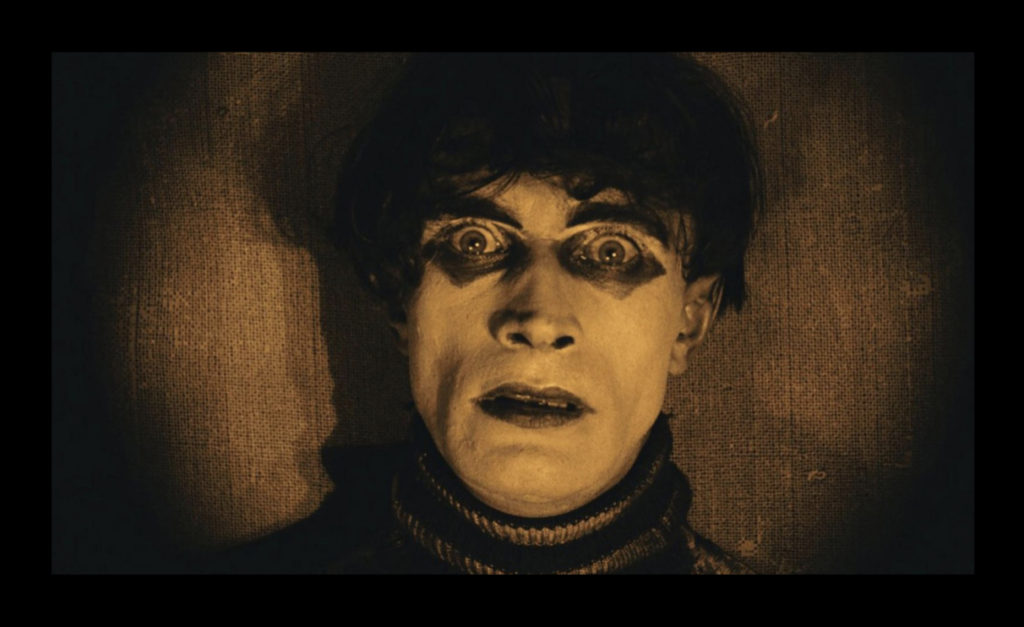Explain the ways in which the film’s use of mise en scene, cinematography and editing may be regarded as innovative.

The Cabinet Of Dr. Caligari (1920) is a silent horror film directed by Robert Weine, largely praised as a revolutionary film. The film’s innovative uses of mise en scene, cinematography, and editing helped draw worldwide attention to German cinema and had a huge influence on the modern films of today, especially in horror and film noir genres.
The mise en scene in this film is effectively used to convey the psychological thoughts and feelings of the unreliable narrator, Francis (Friedrich Feher). The complexities of the abstract buildings and winding roads resemble his twisting mentality.
The shadows can contrast between the light and darkness to add to the drama and chaos the film possesses and capture the vision of the madman’s mind.
Characters wearing dark clothing with exaggerated makeup such as Cesare (Conrad Veidt) are presented as evil, whereas Jane (Lil Dagover) wears all white, symbolising innocence, with simple and precise makeup to suggest the purity of her character.

